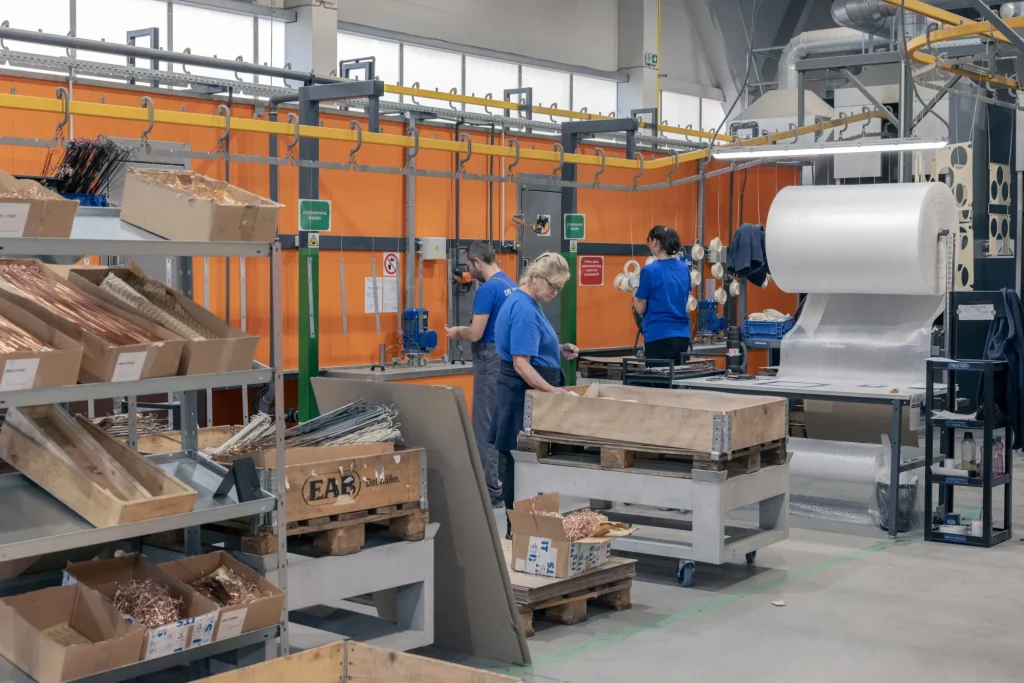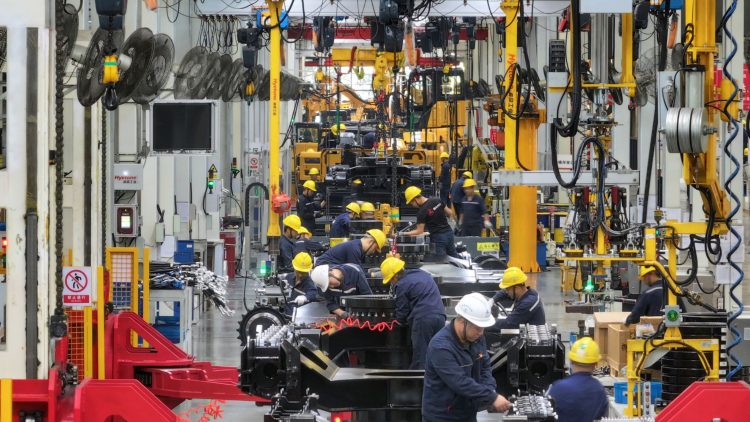The Machinery of Growth Is Stalling—Are Your Investments Ready?
In 2025, a worrying pattern is becoming impossible to ignore: global manufacturing is not just slowing—it’s sputtering. Across continents, from the smokestacks of Germany to the industrial hubs of Southeast Asia, Purchasing Managers’ Index (PMI) readings are flashing red. The once-reliable heartbeat of global economic growth—factories producing steel, semiconductors, autos, and appliances—is weakening. And while this may sound like an economist’s problem, it has direct consequences for equity markets, especially for investors exposed to cyclicals, industrials, and global trade-dependent sectors. Manufacturing may no longer be the undisputed engine of the global economy, but when it contracts, asset prices still feel the chill. The question now is not whether a slump is underway—it clearly is—but how deep it might get and how investors can adjust before the downturn hits their portfolios.
Global PMI Paints a Bleak Picture
Let’s begin with the data. The J.P. Morgan Global Manufacturing PMI, a widely followed composite index, has slipped below the 50 threshold since late 2024 and currently hovers at 48.1 as of April 2025. This signals contraction in factory activity worldwide. In Europe, Germany—the continent’s industrial heavyweight—has seen its manufacturing PMI slide to 44.8, reflecting collapsing new orders and weak export demand. France and Italy are not far behind, while even the UK, despite some post-Brexit optimism, is trending negative again.
In Asia, the picture is no brighter. China’s official manufacturing PMI stands at 49.2, with private-sector readings from Caixin echoing the same. Export orders are drying up, domestic demand remains tepid, and factory gate prices are falling—an ominous sign of deflationary pressure. South Korea, a bellwether for global electronics, reports a PMI of 47.6, while Taiwan and Vietnam—both key players in the semiconductor and electronics value chain—are struggling with overcapacity and weak global orders.
Southeast Asia, often seen as the beneficiary of China+1 diversification, has failed to buck the trend. Thailand, Indonesia, and Malaysia are all seeing PMIs below 50, suggesting that even with a shift in supply chains, global end demand simply isn’t strong enough to lift all boats. In short, manufacturing weakness is global, and it is widespread.
Cyclicals Are Caught in the Crossfire
For investors, the key concern is how this manufacturing slump ripples through asset classes. At the top of the risk ladder are cyclical stocks—companies whose fortunes are tightly linked to the ebb and flow of the business cycle. Think auto manufacturers, heavy equipment makers, chemical producers, and logistics companies. These are businesses that thrive in boom times but falter when orders dry up.
Already, we’re seeing evidence of market repricing. Caterpillar’s Q1 2025 earnings showed a 6% drop in order backlog. BASF, Europe’s largest chemical company, has issued two profit warnings this year. In Japan, Komatsu and Fanuc—two giants of industrial robotics—are under pressure as capital spending softens across Asia.
Cyclical ETFs such as the iShares U.S. Industrials ETF (IYJ) and the Vanguard Materials ETF (VAW) are underperforming the broader market by over 8 percentage points year-to-date. Investors are clearly taking note. Forward P/E multiples are compressing, dividend coverage is thinning, and analyst revisions are tilting bearish.
This shift is not just a short-term rotation—it reflects a fundamental reassessment of earnings power. If global manufacturing demand remains suppressed, these companies may face an extended earnings drought. For long-term investors, that raises uncomfortable questions about whether these exposures still justify their place in the portfolio.
Industrial Stocks Lose Their Shine
Once the quiet stars of post-COVID recovery, industrial stocks are now falling out of favor. From 2021 through early 2023, these firms enjoyed tailwinds from infrastructure spending, reshoring trends, and a wave of corporate capex. But in 2025, those tailwinds are weakening.
Yes, U.S. legislation like the CHIPS Act and Infrastructure Investment and Jobs Act continues to support construction and factory building—but the momentum is slowing. Much of the initial boost has already been priced in, and the implementation pace is beginning to lag political cycles. Meanwhile, in Europe and Asia, fiscal support is constrained by debt overhangs and political gridlock.
Companies like Siemens, Honeywell, and ABB are reporting flat or declining order books. Their backlog is keeping revenues afloat for now, but unless new demand materializes, 2026 could see a revenue cliff. Margins are already under pressure due to sticky wage costs and weak pricing power.
Moreover, industrials with high international exposure are particularly vulnerable to currency volatility and slowing foreign economies. For instance, General Electric, despite strong domestic aviation demand, is seeing weakness in global energy infrastructure orders. Investors who once prized industrials for their diversification benefits may now find themselves overexposed to a synchronized global slump.
Not All Manufacturing Is Equal: Tech Hardware vs. High-Precision Machinery
It’s tempting to paint manufacturing with a single brush—but not all segments are equally vulnerable. Tech hardware, especially semiconductors and consumer electronics, is experiencing a cyclical downturn exacerbated by inventory overhangs and cautious end-user demand. Companies like Intel, TSMC, and Samsung have warned of delayed capex from customers and a slower recovery than previously expected.
Meanwhile, high-precision industrial machinery—think medical devices, aerospace components, and niche automation equipment—is holding up better. These are capital goods with long lead times, stable demand, and often dual-use applications across defense and civilian markets. Investors looking to maintain industrial exposure may consider rotating into these more insulated segments.

Another relative bright spot: companies tied to green infrastructure and energy transition projects. Despite the manufacturing downturn, long-duration demand for electric grid components, wind turbines, and battery production remains strong in North America and parts of Europe. Firms like Schneider Electric and Eaton are benefiting from structural rather than cyclical drivers.
Commodities and Shipping: The Collateral Damage
The manufacturing slump isn’t confined to stocks—it’s also visible in commodities and transport. Industrial metals such as copper and aluminum have seen prices decline by 10–15% since January 2025. Iron ore, a bellwether for construction and heavy industry, is flirting with $90/ton again. These declines are not just speculative—they reflect real deterioration in demand.
Shipping rates, too, are falling. The Baltic Dry Index, which measures freight costs for raw materials, has dropped nearly 30% YTD. Container shipping rates between Asia and Europe are down as inventories build and new orders stagnate. Shipping giants like Maersk and COSCO are signaling weaker guidance for H2 2025, with capacity far outstripping demand.
Commodity-linked equities and ETFs—particularly those tracking industrial metals and global shipping—are under significant pressure. For investors using these vehicles as proxies for global growth, the message is clear: the world’s industrial engines are idling, and so is the return potential of these assets.
Macro Signals: When Manufacturing Slumps, Recession Risks Rise
Historically, global manufacturing downturns have been reliable precursors to broader economic slowdowns. While services sectors now account for a larger share of global GDP, the knock-on effects from manufacturing remain potent. Factory layoffs, weaker corporate capex, falling exports, and lower commodity prices can all erode broader demand.
Central banks are watching this closely. The European Central Bank, despite inflation not yet fully returning to target, is signaling rate cuts due to weakening demand. The Bank of Japan is holding off normalization plans. Even the Federal Reserve, confident in U.S. growth resilience, is beginning to acknowledge downside risks from global spillovers.
Yield curves remain inverted in several developed economies, a classic recessionary signal. For investors, this environment argues for more defensiveness, a rethinking of cyclical exposure, and potentially a larger allocation to cash or short-duration fixed income instruments.
Opportunities in the Slump: Where to Look
Amid all this gloom, opportunities do exist—especially for those willing to be contrarian. History suggests that manufacturing stocks bottom well before PMI readings recover. Investors with a medium-to-long horizon might start building positions in beaten-down but fundamentally strong industrial names, particularly those with high domestic exposure or ties to energy transition.
Another strategy is sector rotation into defensives: healthcare, utilities, and select consumer staples are outperforming in 2025. Dividend aristocrats with low volatility and strong balance sheets are also regaining favor as investors retreat from riskier cyclical bets.
In fixed income, falling manufacturing activity often leads to lower inflation and eventually looser monetary policy. This is beginning to play out in Europe and Asia, and may soon extend to North America. Investors might consider increasing exposure to intermediate-duration government bonds or high-quality corporate debt with attractive yields.
Conclusion: Don’t Ignore the Industrial Signals
The global manufacturing slump of 2025 is not a blip—it’s a broad-based, multi-region slowdown with real implications for asset prices. While the services economy may cushion some of the blow, the ripple effects across cyclicals, industrials, commodities, and credit markets are already visible. For investors, now is not the time for complacency. Portfolio resilience will depend on how quickly and precisely you can pivot. That means reducing cyclical exposure, increasing allocation to structurally insulated segments, and keeping an eye on macro indicators that could foreshadow broader economic weakness. Manufacturing may no longer define the global economy—but when it slows, smart investors pay attention.













































